The latest seaweeds | see how many you know 2
The latest seaweed book | see how many you know
In the vast and rich ocean, in addition to living in all kinds of animals, there are also a wide variety of marine plants, thousands of different kinds of marine plants. Marine plants can be simply divided into two categories: lower algae and higher seed plants. Among them, the size of the algae is very different, the smallest marine single-celled algae is so small that it can only be seen under a microscope, while the largest macroalgae can be up to two or three hundred meters long, which is called the crown of algae.
Seaweeds are a large family of marine organisms. Scientists according to the habits of seaweeds, seaweeds are divided into planktonic algae and benthic algae two major types. Today, we mainly recognize the marine benthic seaweeds are what:
8. Porphyra

Porphyra belongs to the red algae and has a simple shape, consisting of 3 parts: the discoidal cementum, the stalk and the chloroplast. The chloroplast consists of a layer of cells embedded in a thin gelatinous layer, dark brown, red or purple. The chloroplast grows in the intertidal zone, preferring sea areas with high wind and waves, smooth tidal currents, and rich nutrient salts. Its distribution covers frigid, temperate, subtropical and tropical seas. Nori is the cultivated seaweed with the highest production value in the world and is cultivated on a large scale in China, Japan and Korea. China's Fujian and Zhejiang coasts are mostly cultivated with altar seaweed, while the northern part of the country is mainly cultivated with striped seaweed.
9. Gelidium Amansli

Gelidium Amansli belongs to the red algae, Gelidium Amansli color is purple, dark red or dark purple, in the light of the sea area growth tends to be yellowish. Fresh Gelidium Amansli is erect and tufted, pinnate branches alternate or opposite, the branches are flat or sub-cylindrical. Algae body branching a lot, the main branch of the lateral branches, lateral branches on the twigs, various branches of the end of the pointed, branch width 0.5-2 mm. The entire upper part of the algal body is densely branched. The fixation apparatus is pseudopod-like, and the pseudopods are generally black in color. The size of the algal body varies greatly depending on the species and living environment, with the small ones being only 1-1.5 cm or 2-4 cm, the general ones being 10-20 cm, and the large ones being up to 30-40 cm. It grows below the dry tide line and on the rocks on the seabed at a depth of about 10 meters, and likes to live in the sea area with clean water, smooth tidal current and high salinity. Gelidium Amansli body transparent, like jelly, is the main raw material for refining agar. It is widely distributed in China, Korea, Japan, and Southeast Asia.
10. Gracilaria
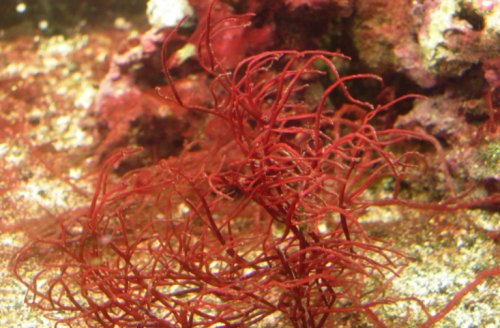
Algae purple-brown or purple-yellow, green. Cartilaginous, terete or linear, tufted, up to 5-60 cm or more. Uniaxial. Primary branches 1-2 times branched, generally partial or alternate. Apically with a terminal cell, from which it divides transversely into secondary cells, which then continue to divide into medullary and cortical cells. Tetrasporangia cruciformly divided, hermaphroditic or dioecious, cystocarps globose or hemispherical, with or without a rostral protuberance at the tip, protruding fixator discoid. It is a warm-water red algae, which grows in tropical, subtropical and temperate zones, with more species distributed in tropical and subtropical sea areas. The largest number of naturally occurring species is found off the coasts of Argentina and Chile, followed by Brazil, South Africa, Japan, China and the Philippines, and to a lesser extent off the coasts of India, Malaysia and Australia. It is also found along the coasts of India, Malaysia and Australia. It is found along the coasts of China and grows on the sandy gravels of the inner bays. Gracilaria is one of the main red algae used for agaric production. The two most common species of red algae in China are A. longifolia and A. realis.
11. Enteromorpha
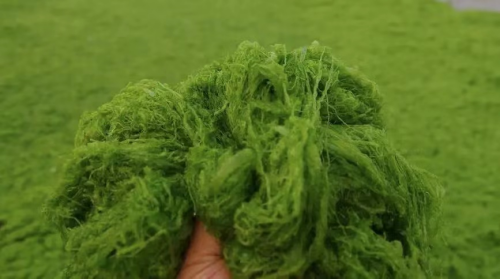
It belongs to large green algae, algae body bright green, composed of monolayer cells, enclosed in tubes or adhering to the band. The cell arrangement is related to the species, mononuclear, pigmented body lamellar, the height of the plant can be up to 1 meter. The base consists of pseudoradical filaments that form a discoidal fixator. The basal part is attached to rocks by an adherent, and grows on mudflats, gravel in the mid-tidal zone. Most species are marine, widely distributed in the world's oceans, some species can also be found in semi-saline water or rivers. Often grows on intertidal rocks, gravel on mud sand beaches, and sometimes attached to the algal bodies of large seaweeds.
12. Ulva Pertusa
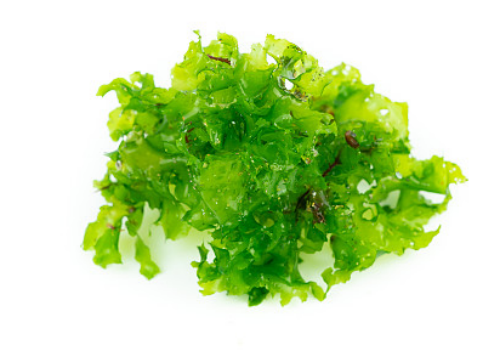
Ulva is a genus of large green algae, commonly known as sea cabbage, and the common species include Ulva foramina, and Ulva foramina lobata. The algal body consists of a multicellular membranous body, which is broadly bladed or split into many small blades, or branched, consisting of 2 layers of cells. The body is sessile. The basal cells of the algal body extend downward in pseudoradical filaments, forming a perennial fixer. It grows on rocks in the mid-tidal zone and near the low-tide zone and the line of large dry tides, and is distributed in temperate and subtropical seas.
13. Fucus Vesiculosus
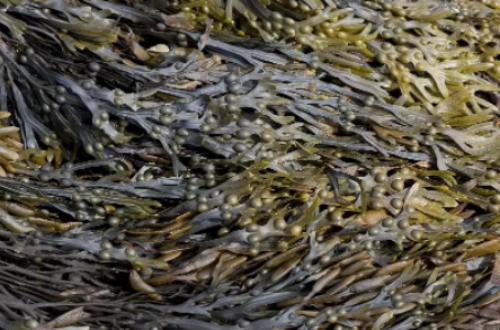
The alga is perennial, flat or cylindrical, bifurcately branched or radially branched around the main stem. Algae body yellowish brown, soft leathery, drying black, generally 6-7cm high, individual up to 14.5cm, stalk subcylindrical, shorter, on which the bifurcate branches 2-8 times, the upper forked branches angle is narrower and unequal, and the upper part of the branches of the nodes longer than the lower part; the lower bifurcate branches are more regular, the angle of the forked branches is wider. It is a brown algae that grows attached to rocks on the shore. It grows on the coast of Brittany, France, where marine life is abundant, and can be harvested at low tide.
14. Hizikia fusifarme
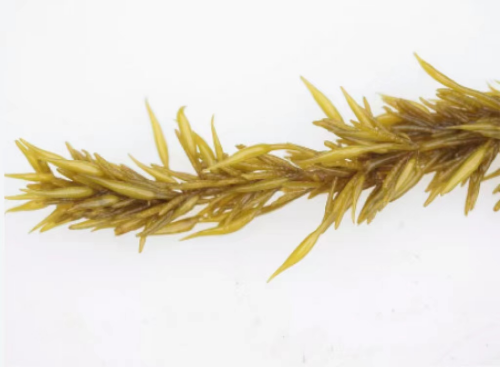
Hizikia fusifarme, also known as sea vegetable buds, sheep's milk, sea barley and so on. Cyclophyllum, Sargassum family. Algae body is yellowish brown, fat and juicy, with great variation in the chloroplasts and a variety of shapes. Plant height 30-50cm, the longest up to 3m or more. It is divided into pseudoroots, trunks, leaves and air sacs. The cylindrical pseudoroot is branched. Primary leaves below the "stem" are flat, thick, and ovoid, and secondary "leaves" at the upper part of the "stem" are rod-shaped or aubergine. Air sacs fusiform, arising from leaf axils. Dioecious, with egg and spermatophore sacs formed in the receptacle. It grows on rocks in the low-water zone and flourishes along the coast of southern China, and is also distributed in Shandong and Liaoning.
15. Laminaria digitata
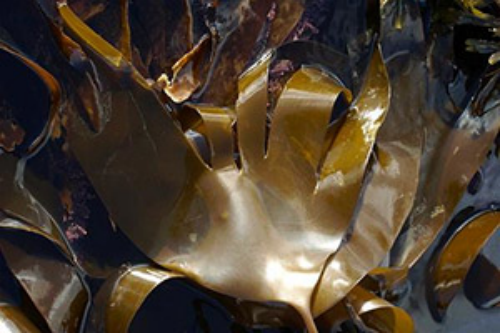
It belongs to the brown algae family Kelpaceae, shaped like the palm of the hand, so the name "palm kelp", naturally grows on the west coast of Europe, and kelp (Laminariajaponica) has a close kinship, far away from the Asian and European continents.



 Mobile: 86-13012553585 15610518510
Mobile: 86-13012553585 15610518510 Phone (Fax):86-53283197178
Phone (Fax):86-53283197178 E-mail: admin@bluealga.com
E-mail: admin@bluealga.com Add:No.918 Lingang 8 Road Huangdao District,Qingdao China 266400
Add:No.918 Lingang 8 Road Huangdao District,Qingdao China 266400

